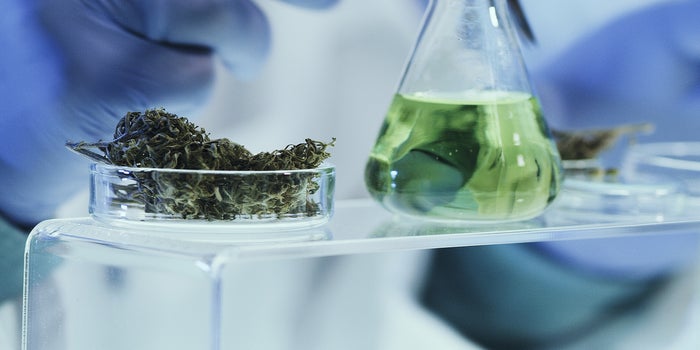You are here
Home 🌿 Cannabis Technology News 🌿 Cannabis Has a Bioavailability Problem, But Here Are Some Innovative Solutions 🌿Cannabis Has a Bioavailability Problem, But Here Are Some Innovative Solutions

Too often, we hear, "I have been taking CBD, but I don't feel any effects."
But the problem doesn't lie with CBD. Scientific research tells us that cannabinoids (CBD, THC, CBG, CBN) provide therapeutic relief relating to stress, anxiety, sleeplessness, and inflammation with the right dose and when taken correctly. Medical marijuana shows even greater promise for more severe ailments like epilepsy, Alzheimer's, Parkinson's, and cancer, to name a few.
The issue stems from CBD's inability to absorb easily into the body; more biotechnological advances are necessary to resolve this. Cannabinoids are oil-based and do not readily absorb into bodies that are 80% water. Additionally, they face destruction from stomach acid and other obstacles when traveling through the digestive system. Thankfully, there is a flurry of activity among chemists and engineers looking for innovative solutions.
Let's start with the different ways cannabinoids get processed in our bodies.
The pros and cons
1. Nasal spray or vaping provides the most rapid results and CBD intake because it enters directly into the bloodstream through thin membranes of the nose and lungs.
2. Sublingual Pathway: CBD edibles like chewing gum, oil, and hard candies get ingested through tiny capillaries surrounding the tongue and cheek if taken the right way. CBD oils should be held under the tongue for at least a minute to give it time to absorb inside the mouth's membranes.
3. Digestive System: Orally ingesting CBD is the least effective way for CBD to absorb into the bloodstream. A battle with stomach acid and liver metabolizing enzymes make it difficult for CBD to reach the bloodstream fully intact. Taking CBD with a portion of high-fat food or drink (milk) will increase absorption because the CBD is stored in the fat cells keeping it in the body longer and preventing it from getting destroyed.
Chemical and engineering solutions
The formulation of a quality CBD product starts with a concentrate rich in cannabinoids. Extracting cannabinoids and terpenes from the hemp plant is delicate and tricky because they can quickly get destroyed in the process. The cannabis industry started producing CBD concentrate with standard extraction methods like hydrocarbon, Supercritical CO2, and Ethanol. Still, engineers are looking for new ways to tweak the technology to make a more potent and robust concentrate.
When a cannabinoid concentrate gets mixed with the appropriate excipient (a pharmaceutical term for ingredient), it will solubilize CBD and help it absorb into the bloodstream. Some excipients may include ethynol, coconut oil, MCT oil, hemp oils, cranberry oil, or terpene blends. Chemists are experimenting with different formulations that could mean the difference between a CBD product that does the intended job and one that does not.
The pharmaceutical industry is always hard at work looking for ways to deliver drugs into the body effectively, and the cannabis industry is taking note. Here are a few notable biotechnologies emerging that will enable CBD to absorb into the human body effectively:
Ionized technology turns CBD into "SALT," enabling cannabinoids to dissolve in the body's water.
The nano emulsification process chemically modifies cannabinoids into small water-soluble particles.
Flash Extracted technology drives hot air through the hemp plant material to distill cannabinoids off the plant. Vaporizing something is not new, but capturing it out of a moving air stream is new.
Lipid encapsulation encapsulates cannabinoids with a water-friendly exterior to deliver cannabinoids into the bloodstream effectively.
In the end, all consumers want is a CBD product that delivers its intended results. Without the remediation of CBD's absorption issue, consumers will lose interest and move on. The chemist or engineer who discovers the breakthrough chemical formulation or technology to deliver abundant cannabinoids into the bloodstream intact will accelerate the industry forward.
420 Intel is Your Source for Marijuana News
420 Intel Canada is your leading news source for the Canadian cannabis industry. Get the latest updates on Canadian cannabis stocks and developments on how Canada continues to be a major player in the worldwide recreational and medical cannabis industry.
420 Intel Canada is the Canadian Industry news outlet that will keep you updated on how these Canadian developments in recreational and medical marijuana will impact the country and the world. Our commitment is to bring you the most important cannabis news stories from across Canada every day of the week.
Marijuana industry news is a constant endeavor with new developments each day. For marijuana news across the True North, 420 Intel Canada promises to bring you quality, Canadian, cannabis industry news.
You can get 420 Intel news delivered directly to your inbox by signing up for our daily marijuana news, ensuring you’re always kept up to date on the ever-changing cannabis industry. To stay even better informed about marijuana legalization news follow us on Twitter, Facebook and LinkedIn.




